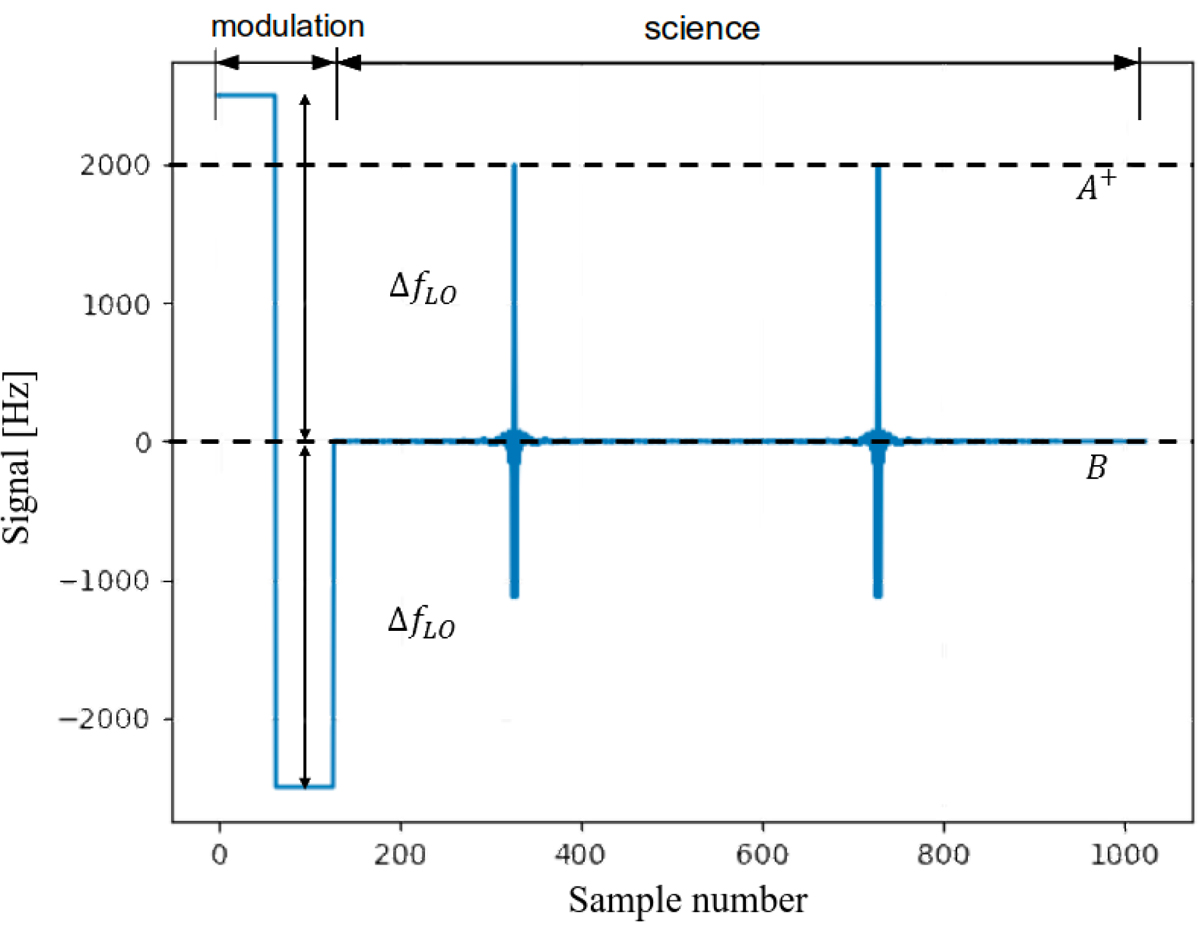Fig. 2.

Download original image
Expected KID resonance frequency, ℐ (defined in Eq. (5)), as a function of the sample number within a KISS data bloc. Each data block consists of 1024 samples: the first 128 are dedicated to the modulation, with the remaining samples being dedicated to scientific data acquisition. A+ identifies the “interferometric response” in the transmission output (see Sect. 3.3), while the “background response”, B, (see Sect. 3.2) is scaled to 0 Hz; i.e., we subtracted ftone.
Current usage metrics show cumulative count of Article Views (full-text article views including HTML views, PDF and ePub downloads, according to the available data) and Abstracts Views on Vision4Press platform.
Data correspond to usage on the plateform after 2015. The current usage metrics is available 48-96 hours after online publication and is updated daily on week days.
Initial download of the metrics may take a while.


